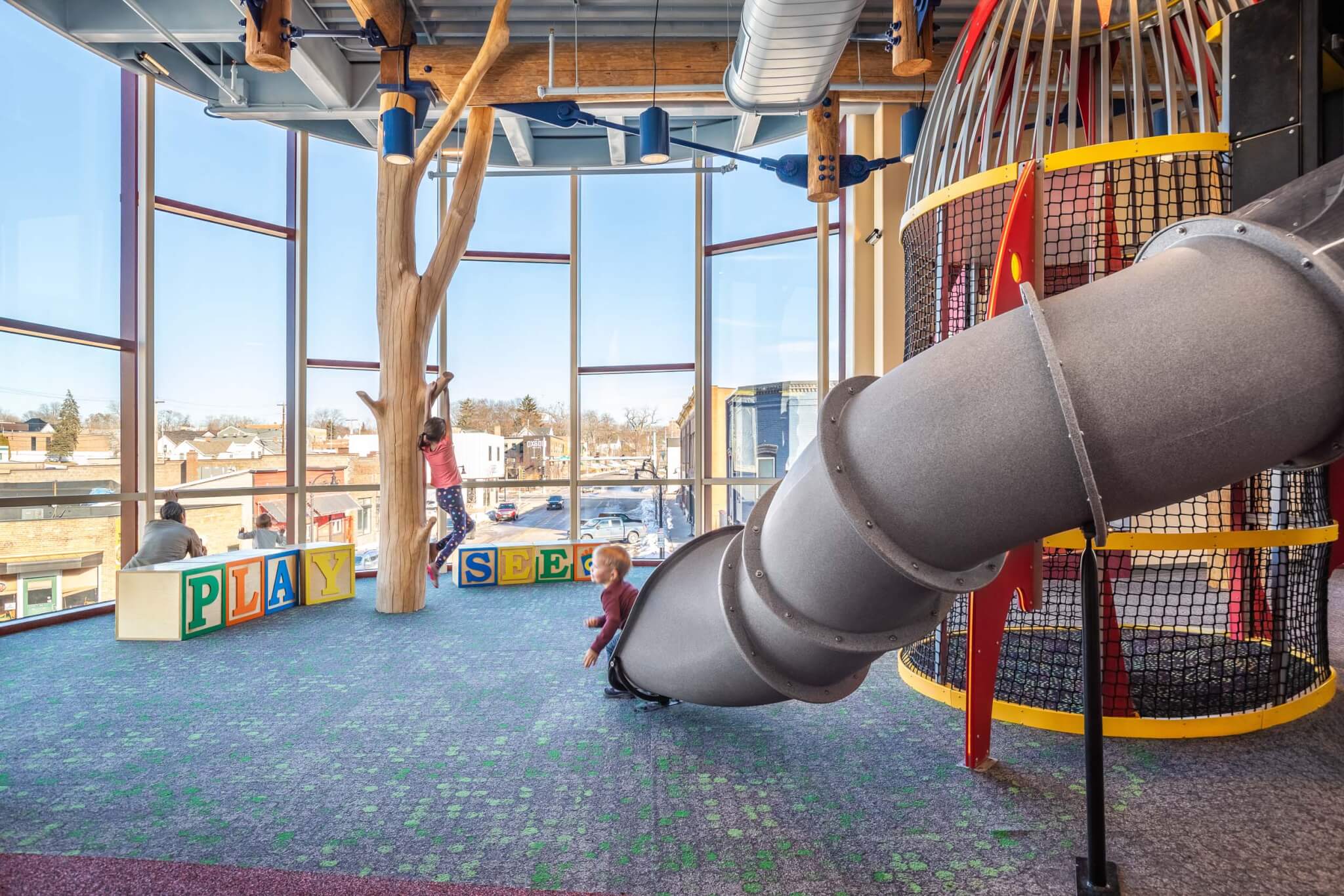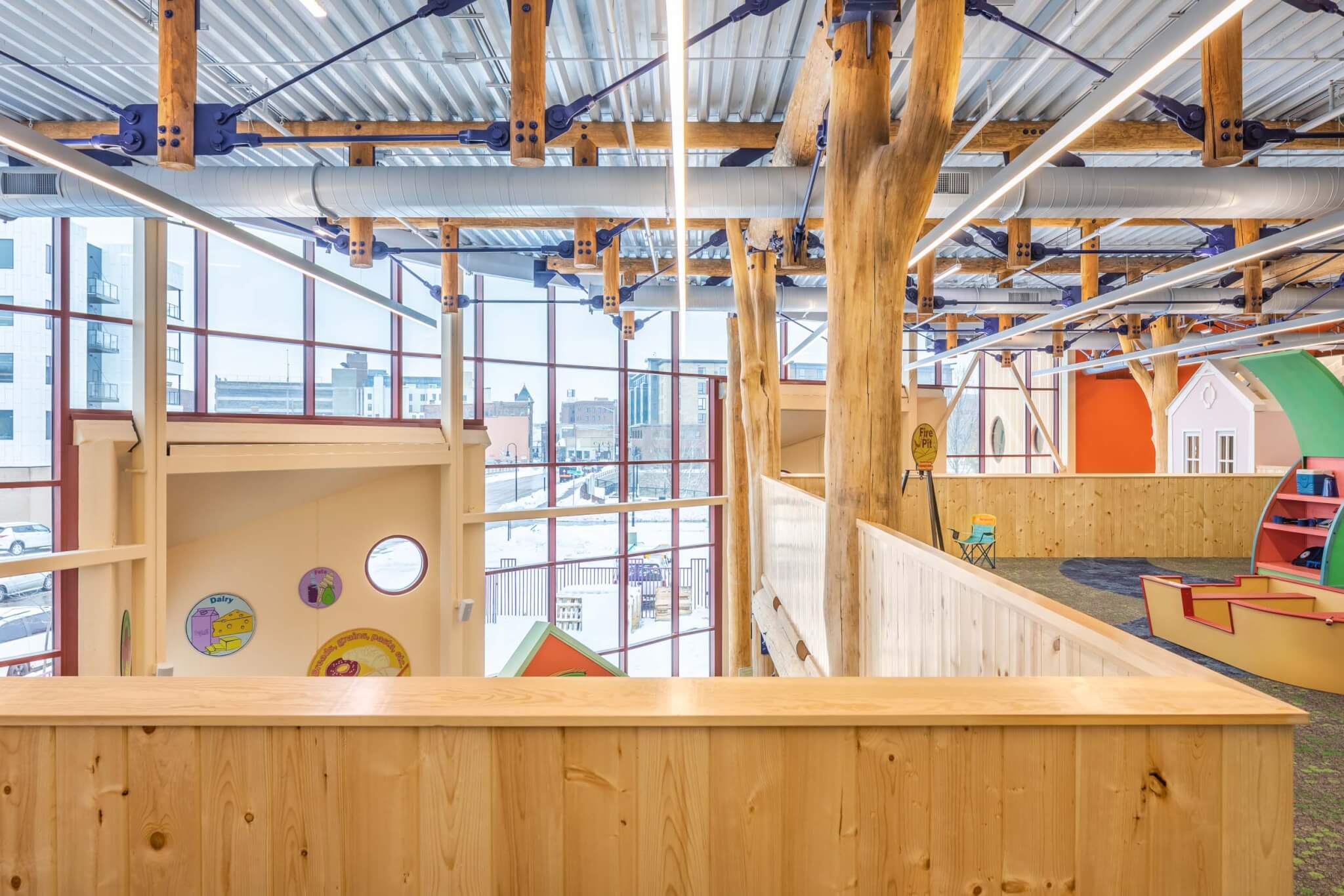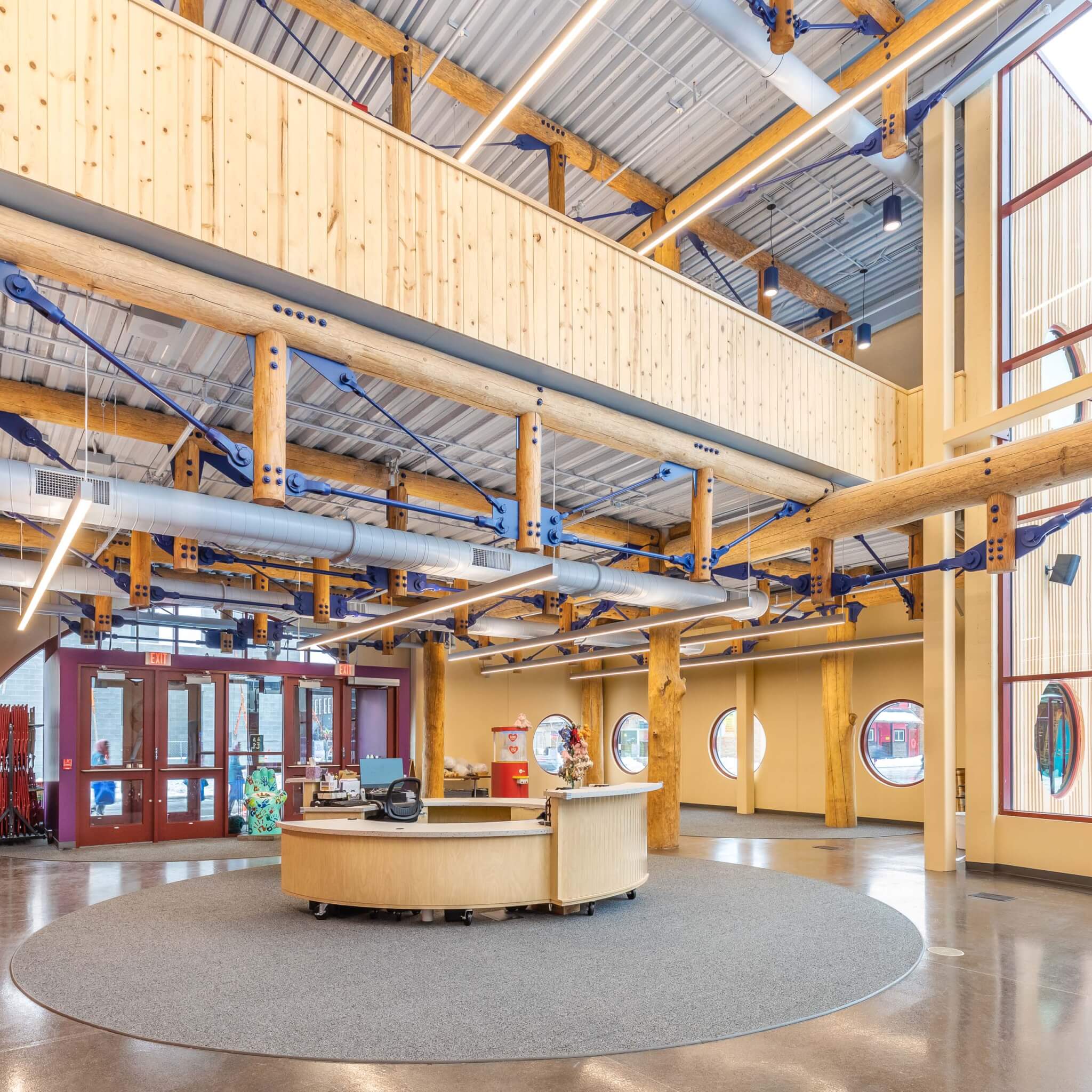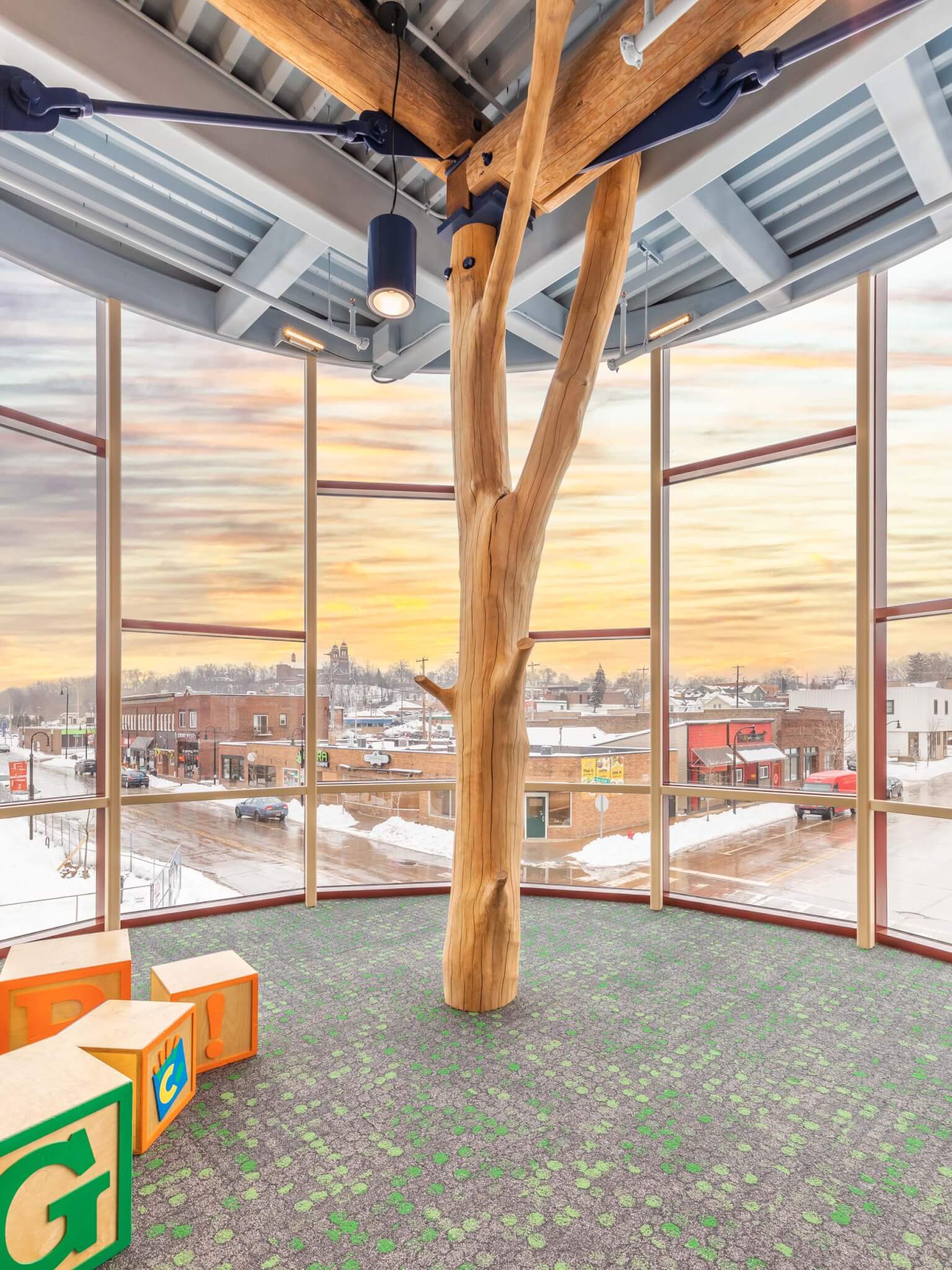Wisconsin-based design and construction firm WholeTrees Structures is on a mission to nurture the relationship between the built environment and forests. To do so, the company repurposes waste trees—trees that are deemed too thin to be milled yet are still structurally sound—to create sustainable commercial timber products and technologies. When Malcolm Holtzman, partner at Steinberg Hart, reached out to WholeTrees in 2020 about the 24,000 square-foot Children’s Museum of Eau Claire (CMEC)—the construction firm’s largest project to date—CMEC became proof-of-concept for structural round timber (SRT) as a sophisticated, sustainable material at-scale.


Completed earlier this year, the Wisconsin museum’s primary structural support comprises responsibly sourced timber: around 230 logs, 120 joist and girder trusses, 30 15-foot columns and six 30-foot columns. “It’s the first of its kind globally in using multispecies, single-origin, non-commodity timber, brought together in a modern code compliant application,” Amelia Baxter, cofounder and CEO of WholeTrees told AN. Three species, all from forests that practice long-term economic and environmental sustainability, make up CMEC.
Douglas fir was donated by Port Blakely, a family-owned company in the Pacific Northwest. Ash that was infected with emerald ash borer was salvaged from a park in Sheboygan, Wisconsin and turned into the 15-foot columns. The museum’s sugar maple comes from Seven Islands Land Company in Maine.


The exterior is clad in concrete with a bark-like texture, generous windows and whimsical portals. Within, a loft-like space is supported by preserved trunks and entire trees whose gestural moments recall branches forming a canopy, and act as visual and theoretical armature for the museum’s playful hands-on learning. More than a marriage of form and function, the intact trees boast improved performance—namely through predictably safe checking, or cracking, of fibers for refined aging.
But overall, WholeTrees’s collaboration with CMEC allowed the institution to meet urgent sustainability goals. Due to the company’s careful partnership with foresters, WholeTrees’s products actually sequester carbon. To date, CMEC has sequestered over 350,000 pounds of carbon dioxide—in addition to implementing 300 solar panels and drawing off 16 geothermal wells.

While the scale of the project brought new challenges for the company, namely how to transport douglas fir with its many specifications and without impacting water quality, CMEC marks a new milestone for carbon-smart SRT. “The two-story building is so exciting for us because we feel like now that we’ve done two, we have the perfect precedent to do four,” continued Baxter. It’s an expansion that promises more affordable, and thus widespread, adoptions of sustainable forestry going forward.
Project Specifications
-
- Architect: Steinberg Hart
- General contractor: Market&Johnson, Hoeft Builders
- Engineers: ERA, KPFF
- Truss fabricator: Building Products
- Engineer of record: Ericksen Roed











